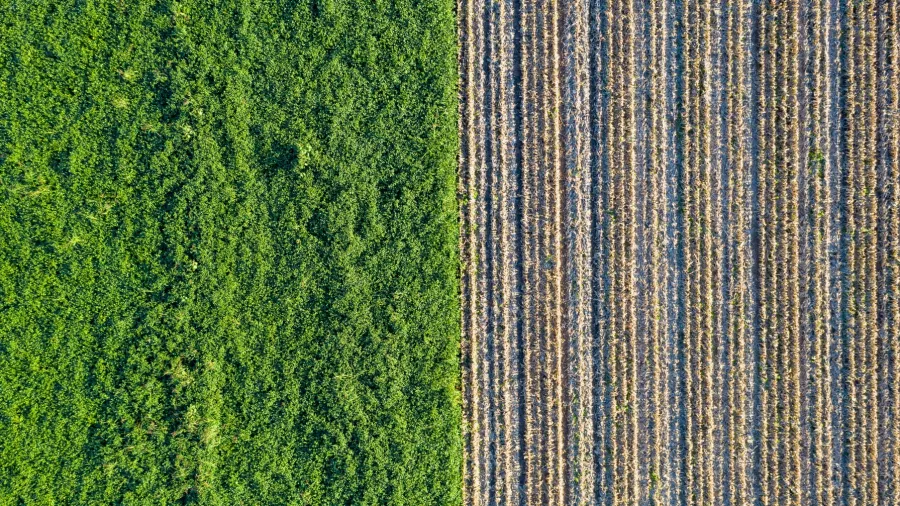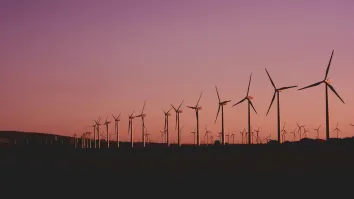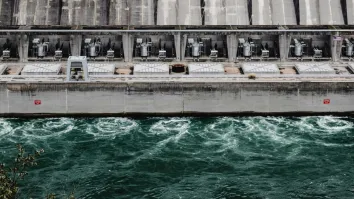
Asia turns to biomass co-firing in coal plants for energy security, transition
However, experts cautioned this means that the operations of coal-fired power plants would be extended.
Coal-reliant Asia could not afford to phase out the fossil fuel industry immediately to accelerate the transition to renewable energy. They shift to co-firing biomass in the coal plants so as not to jeopardise energy security whilst reducing emissions. In a way, this results in prolonging the life of power plants.
Biomass could potentially reduce the reliance on fossil fuels, and blending it with coal in power generation presents an opportunity for Asian markets to lower power plants’ net carbon emissions as biomass combustion is carbon-neutral, Alejandra Leon, project officer at World Bioenergy Association (WBA) said.
“As the Asian region works towards cleaner and more sustainable energy systems, the strategic deployment of biomass and co-firing can play a crucial role in achieving emission reduction goals, fostering energy security, and supporting local economies,” Leon told Asian Power.
“It’s essential, however, that these initiatives are undertaken with a holistic approach that considers technological advancements, environmental sustainability, and long-term energy strategies,” Leon added.
The adoption of bioenergy in Asia has increased four times in the past decade to 64,193 megawatts (MW) in 2022 from only 16,270 MW in 2012, data cited by the WBA from the International Energy Association (IEA) showed. China is leading in terms of capacity with 34,088 MW, followed by India with 10,670 MW, and Japan with 5,476 MW.
In India, the government is requiring all coal-fired power plants to co-fire with biomass with a ratio of around 5%–7%, the association said. Similar mandates were issued in China, whilst Japan and South Korea have ramped up their biomass share in power generation by giving incentives such as feed-in-tariffs and renewable certificates.
One of the recent projects cited in India is the National Thermal Power Corporation’s (NTPC) co-firing of 77,000 tonnes of agro biomass at 14 power plants, with a plant to increase the capacity rapidly, WBA said.
Putra Adhiguna, Energy Technologies Research lead for Asia at the Institute for Economics and Financial Analysis, also noted that China and India mostly use solid biomass from crops and residues, even forestry residues; whilst Japan and South Korea, which are major importers, use wood pellets or palm kernel.
Southeast Asia’s situation
The biomass capacity of Southeast Asia is only around 6,000 MW as of 2020, and is mainly installed in Thailand with 2.2 gigawatts (GW), and Indonesia with 1.9 GW capacity, Suwanto, senior officer of Power, Fossil Fuel, Alternative Energy and Storage Department at the ASEAN Centre for Energy (ACE), said.
This is compared to the power generation coming from oil and coal which accounts for 76% of the region’s total, he said.
Despite this, there is significant progress in driving biomass use in the power sector, particularly in Malaysia, Thailand, Vietnam, and Indonesia, as cited in an ACE report. In Indonesia, state-owned electric utility firm PT PLN issued a regulation that provides a basis for the implementation of co-firing in coal-fired plants.
Malaysia laid out four strategic pillars for renewable energy targets in power generation composition until 2035 under its roadmap, with the second pillar aimed at exploring potential support mechanisms for biomass co-firing. Thailand also included a “Community-Based Power Plant for Local Economic Project” in its plan with a total capacity of 1,993 MW comprising biomass, biogas, and solar hybrid.
In Vietnam’s recently-approved Power Development Plan, coal plants have to burn biomass and ammonia fuel after 20 years of operation starting at 20% and increasing to 100% as it aims to phase out coal by 2050, according to the ACE report.
“In terms of supply, Vietnam has become the world’s largest supplier of wood pellets (after the USA). Utilising resources from the furniture industry, the country has become a major player in the biomass sector in the region,” WBA said.
Whilst biomass co-firing is seen as beneficial, markets should take caution in dealing with blending it with coal, Adhiguna said.
“Forcing its application may seem to bring benefit, but to get more biomass in the energy mix you will need to consume more coal, a proposition which will increasingly be scrutinised by stakeholders,” he said.
Extending coal plants’ lifespan
A typical co-firing ratio entails around 2% to 10% biomass and 90% to 98% coal, Adhiguna said, noting that more coal would be needed to generate more biomass power under this kind of arrangement.
“Focus to increase the biomass mix is needed, but going to dedicated biomass power plants seemed to be more promising as coal power plants have their limitations in accepting biomass, he said.
“Many will scrutinise the basic tenet to this co-firing, which can be perceived as an effort to extend the social license of the coal power plants,” he added.
Leon noted that coal is still the top supplier of electrical baseload power globally, so “it is not economically feasible in many emerging economies to switch to alternative renewable power sources overnight.”
“There is and will still be a need for dispatchable baseload power and biomass provides that. It also helps to utilise local resources, develop local economies, and reduce dependencies on imported fossil fuels,” she said.
For Suwanto, it is important to consider the energy trilemma of energy security, sustainability and affordability, particularly on the level of the Association of Southeast Asian Nations (ASEAN), which represents the region where coal is still needed for energy security.
Under the ACE’s 7th ASEAN Energy Outlook, the region would need coal from around 2040 to 2050, Suwanto said. He added that the average age of coal power plants in the region with a lifetime of around 40 to 50 years, is about 12 years.
Biomass co-firing will also contribute to the power plant’s business performance as early retirement of power plants would translate to financial losses. Aside from this application, carbon capture, usage, and storage technologies can also be installed in coal plants.
“I think combining the biomass in the coal power plants is one of the actions to mitigate or to reduce the emissions from the coal power plants, which means that we can prolong the life span of the coal power plant itself,” Suwanto said.
Hurdles to biomass use
The adoption of biomass in power generation is also faced with various hurdles including in logistics and supply chain, according to WBA. It said that biomass is available in small and dispersed land holdings. Thus, the collection, transport, and storage push feedstock costs.
Aside from the costly material collection, Adhiguna said that “in many places, the benefit of biomass is propped by the benefits of handling residues and waste, such as avoiding open burning of agricultural waste.”
“There is no ‘one story’ in biomass adoption; they remain largely location-specific where biomass resources can be easily sourced within proximity,” Adhiguna said.
There are also hurdles in the technological aspect as some technologies require updates, such as replacing coal-fired boilers to accommodate biomass or installing dedicated biomass power generation units, the WBA noted. Investment in research and development will also be critical in driving biomass use.
According to the ACE report, pulverised coal (PC) boilers are used the most amongst the common types of boilers, which include circulating fluidised bed boilers and stokers. However, the PC boiler can only use wood pellets as biomass fuel.
It also said that direct co-firing, the cheapest and easiest amongst the three methods of co-firing, would need proper biomass pre-treatment or handling as poor handling could lead to reductions in the boiler’s efficiency.
“Technical support from the original CFPP (coal-fired power plants) manufacturer is critical to ensure the capability of the existing CFPP,” the ACE report read. “Knowing that any modification to the existing CFPPs will add more costs, a comprehensive feasibility study is needed to determine the most effective approach to implementing biomass co-firing, in terms of the selection of potential biomass feedstock, type of co-firing, etc.”
Suwanto also cited the unequal access to information about biogas extraction techniques and suitable feedstocks. The power sector would also have to compete with other sectors that use the feedstocks such as food and agriculture.
“This means that the scarcity of the feedstock might be another challenge for the utilisation of biomass for power in ASEAN,” he said.
Policymakers lack awareness of the sector, WBA said, adding that biomass is put back on the agenda for renewable power generation as international and national commitments focus on climate change and fossil fuel displacement.
Driving capacity
In the ASEAN, ACE said it is important for a country to collaborate with other markets that have experience and advanced technological capabilities in co-firing. There should also be a national standardisation for biomass in power generation like in Indonesia to enhance power plants’ efficiency.
Whilst biomass co-firing is not new, ASEAN has only adopted it in the last decade so there is a need for further research and development. There is also a need for a biomass database and mapping system to ensure a steady supply of high-grade biomass.
Suwanto also highlighted the need for incentives or feed-in-tariffs to attract investment in biomass co-firing in Southeast Asia, since investments in coal are already limited in view of its phaseout. “We need mechanisms to support the transition from coal power plants to biomass co-firing in coal power plants,” he reiterated.
Adhiguna said the sector will grow “quite substantially,” but flagged that more care should be considered in evaluating the sustainability of biomass power generation, backed with scientific evidence, noting that sustainability standards for biomass sourcing could still vary.
Chiming in on the subject, Leon said biomass adoption could see several key developments and this could be supported by the potential increase in policy support that could drive investment, and supported by the growing energy demand.
There could also be regulations and certifications that will be implemented to ensure that biomass is secured from sustainable sources. Projects focused on biomass could drive local economic benefits and may be explored as cleaner alternatives once public awareness is raised on the environmental impact of conventional energy sources, amongst others, Leon said.
“It's important to note that the pace and nature of these developments will depend on various factors, including government policies, technological advancements, public acceptance, and global market dynamics,” Leon said.
“The next five years are likely to witness a growing role for biomass in the Asian energy landscape, but the extent of its adoption will be influenced by a complex interplay of these factors,” she added.



















 Advertise
Advertise






